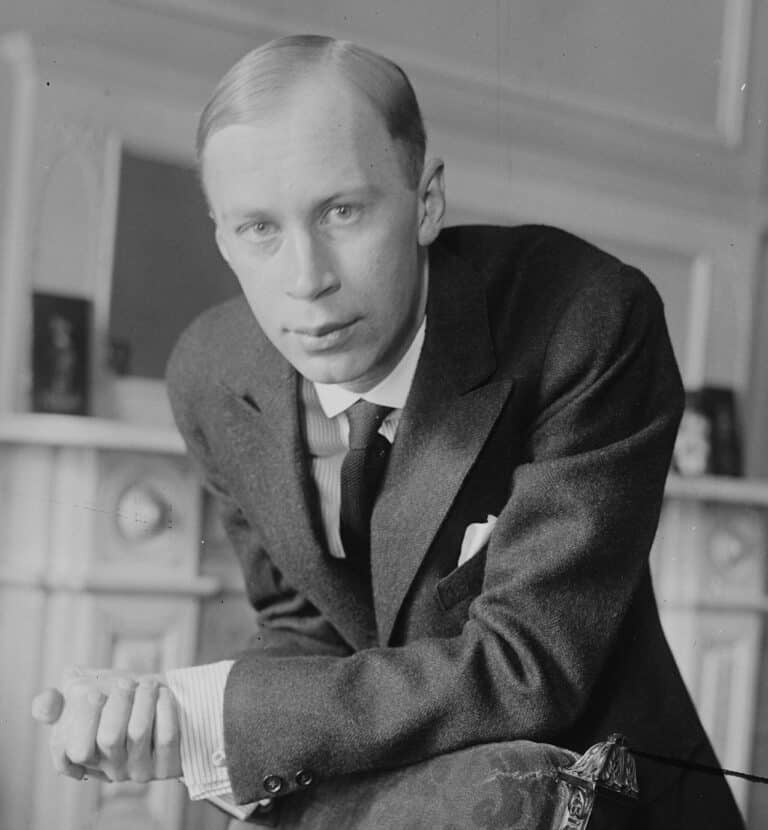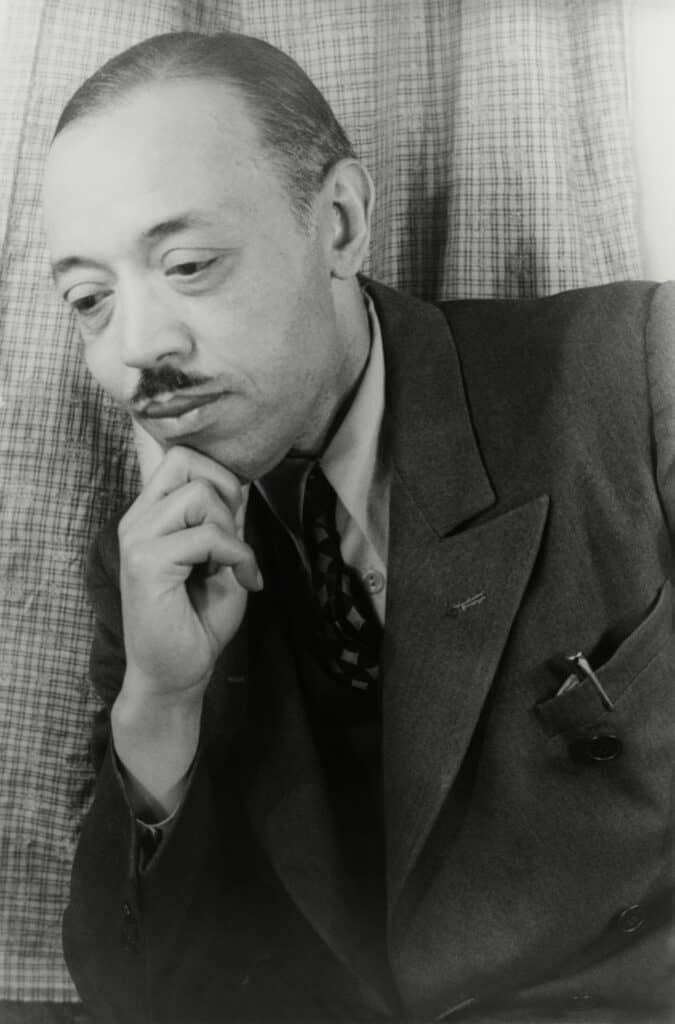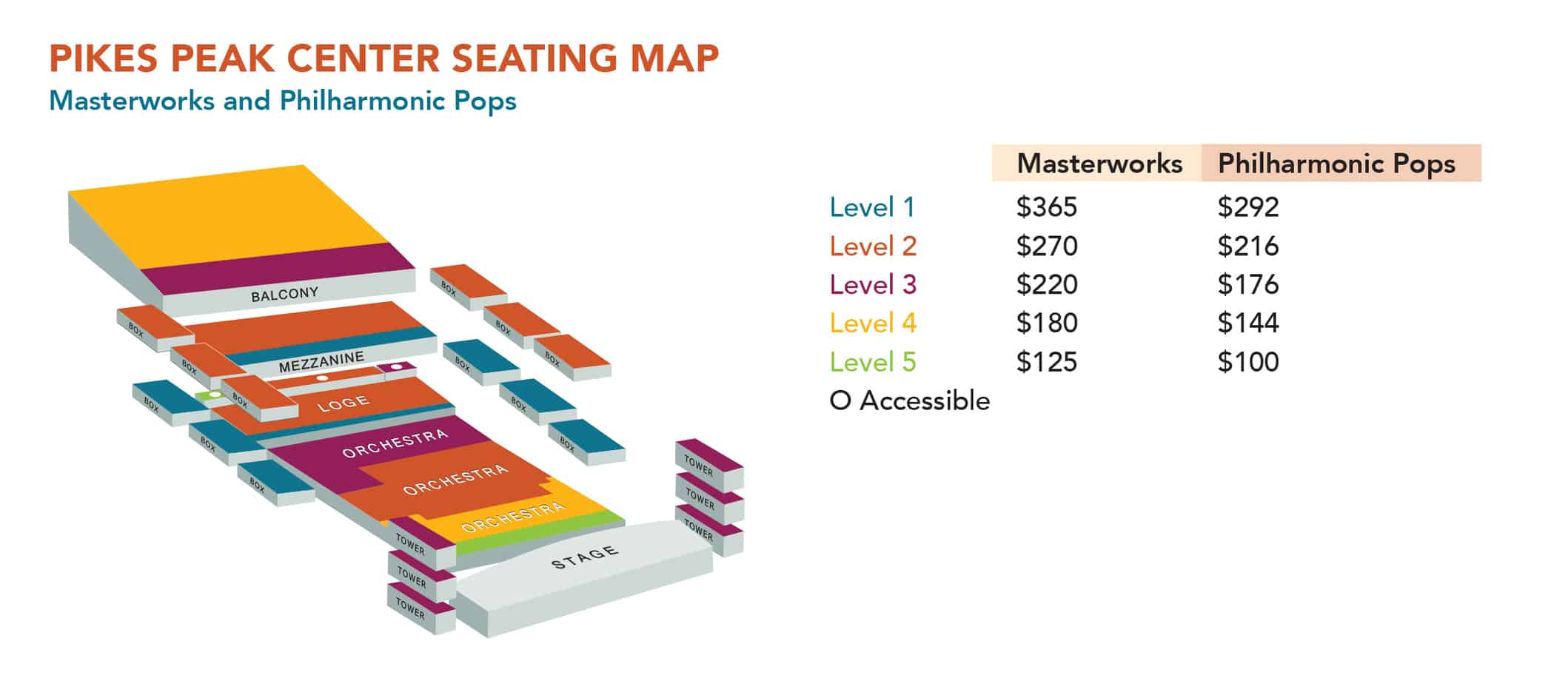Claude Debussy (1862 - 1918)
Prelude to "The Afternoon of a Faun"
11 minutes
Composer: Claude Debussy (Born in St Germain-en-Laye, France in 1862; Died in Paris in 1918)
Work composed: 1892-1894
World premiere: The premiere occurred on December 22, 1894, at a National Society of Music concert in Paris and conducted by Gustave Doret.
Instrumentation: 3 flutes, 2 oboes, English horn,
2 clarinets, 2 bassoons, 4 horns, 2 harps, 2 antique cymbals (often substituted with crotales: thick brass discs that are distinctly pitched), strings

Prélude à “l’Après-midi d’un Faune” (Prelude to “The Afternoon of a Faun”)
In the last decades of the 1800’s, French poet Stéphane Mallarmé (1842–1898) was a key figure at the heart of the Decadent and then Symbolism movements. Mallarmé’s style was famously represented by his texts taking shapes of visual Prelude to “The Afternoon of a Faun” 11 minutes patterns, such as “A Throw of the Dice Will Never Abolish Chance” (where the text is shaped as tumbling dice). But his “The Afternoon of a Faun” represented the Symbolist principles brilliantly with its other-worldliness, erotic sensuality, and dream-like character. It’s the monologue of a Roman mythological Faun – half-man and half-goat – describing the sensual feelings and thoughts he’s experiencing after his afternoon slumber:
“These nymphs I would perpetuate
So clear
Their light carnation, that it floats in the air
Heavy with tufted slumbers.
Was it a dream I loved?
My doubt, a heap of ancient night, is finishing
In many subtle branch, which left the true
Wood itself, proves, alas! That all alone I gave
Myself for triumph the ideal sin of roses.
Let me reflect . . .”
(Translation by Roger Fry)
As music alone, however, Debussy’s Prelude is particularly remarkable in how ingeniously he evokes Mallarmé’s poetic dream state – of existing in a moment of beauty and sensuality at the edge of sleep and waking. Debussy accomplishes this by mostly abandoning traditional musical structures and melody (although melody is not absent) and instead giving the Prelude its flow with highly chromatic wanderings that gravitate toward the pitch of C#, which Debussy believed to have a very exotic, psychological effect. Voicing, too, is paramount: the lovely and almost improvisational opening theme (Debussy referred to it a melodic “cell”) is famously played first on solo flute, then eventually passed to the oboe, then back to two unison flutes, then clarinet…. morphing over shifting tonalities and constantly changing timbres and “light,” thus so effectively creating that dreamstate.
The piece wafts through these sound moments much like one’s consciousness might float through memories, emotions and senses, which Debussy also achieved through an exquisite array of orchestral colors. As the poem bids the reader “… Adieu…I shall see the shade you became,” so does the musical Prelude.
The Prelude’s popularity has never waned, remaining as mesmerizing now as it was to Mallarmé, who, despite initially regretting his musical invitation to Debussy, wrote him after hearing its premiere in 1894:
“I have just come out of the concert, deeply moved.
The marvel! Your illustration of The Afternoon of a Faun,
which presents a dissonance with my text only by going
much further, really, into nostalgia and into light, with
finesse, with sensuality, with richness.”
Sergei Prokofiev (1891 - 1953)
Piano Concerto No. 3
in C Major
Op. 26
30 minutes
Composer: Sergei Prokofiev (Born in Sontskova, Ukraine in 1891; Died in Moscow in 1953)
Work composed: 1911 – 1921
World premiere: The premiere occurred on December 16, 1921 in Chicago, with the Chicago Symphony Orchestra conducted by Frederick Stock. Prokofiev himself performed the solo piano part.
Instrumentation: solo piano, 2 flutes, piccolo, 2 oboes,
2 clarinets, 2 bassoons, 4 horns, 2 trumpets,
3 trombones, timpani, percussion (bass drum, cymbals, castanets, tambourine), strings
Piano Concerto No. 3 in C Major, Op. 26
I. Andante – Allegro
II. Tema con variazioni
III. Allegro, ma non troppo

Prokofiev’s Third Piano Concerto was completed in 1921 and had its premiere that same year in Chicago (with the Chicago Symphony Orchestra under Frederick Stock, with Prokofiev at the keys. It was immediately hailed as a masterpiece and it also put Prokofiev on a kind of different musical map – whereas his previous works earned him the nickname l’enfant terrible, the Third Concerto combined his earlier ferocity and wit (and a famously difficult piano part) with tenderness and a unique lyricism.
The themes that comprise this Concerto began a decade prior to the premiere. First, in 1911, came the idea to write a third virtuosic piano concerto to follow his first two – a remarkable feat for a young composer not even 20 years old. This was also when Prokofiev conceived the theme that eventually found its place at the end of the Third’s first movement. Nonetheless, as so often happened in Prokofiev’s life, world travel and concertizing distracted his composing for the next ten years, yet ideas and themes came to him that eventually were gathered into his Concerto.
Finally, in 1921, he spent a summer at St. Brévin-les-Pins, a small town on the coast of Brittany in France, where many Russian ex-patriots (and others) came to form a kind of art colony. By the time he arrived at this seaside artists’ mecca to complete his Third Concerto, he had already come up with almost all the themes, “with the exception of” said Prokofiev, “the subordinate theme of the first movement and [a] third theme of the finale.” After almost 10 years of gestation, the Third Concerto was completed in a few months during that summer of 1921. Despite its quilt-like and peripatetic genesis, the entire Concerto plays out seamlessly, as Prokofiev weaves disparate themes and characteristics together.
This famously difficult piano piece begins with a surprisingly gentle and lovely Andante. A solo clarinet opens the work, singing sadly as though lost in a gigantic place. It’s joined by a second clarinet, then strings, and the feel slowly unfolds into a rhapsodic atmosphere. Soon, however, the Allegro engines begin churning in the orchestra, building up tension until the pianist leaps into the spotlight with swagger creating whirlwinds. Before long that “subordinate theme” that Prokofiev had yet to write during his summer in Brittany appears here with clacking castanets and double reeds stepping out in a danse macabre. The effect is eyebrow raising, yet perfect – this first movement is wonderfully surprising and enthralling, but always exactly “right” sounding. The final section of this movement dials up the energy into a brief yet thrilling conclusion.
The second movement, Tema con variazioni, is built around an opening theme and its five variations – in which Prokofiev makes an otherwise unremarkable theme fully glorious by adding sophisticated, imaginative harmonization. Prokofiev injects a fair amount of pianistic bravura into the mix as well, such as in his second and third variations (starting after about two minutes into the movement). But it is the dreamlike fourth variation, marked Andante meditativo, (slowly, meditatively) that stands as some of Prokofiev’s most lovely music, with its misty and ethereal harmonies. The melting ending statement – a contrived ascending scale – is a perfect testament to Prokofiev’s type of modern, yet beautiful, lyricism.
Throughout the concerto, the pianist has been called upon to do extraordinarily challenging things, and the third movement finale, Allegro, ma non troppo (fast, but not too much), adds even more pyrotechnics. As one of the most extraordinary pianists of his day, Prokofiev had no qualms writing and playing insanely difficult passages and referred to this movement as an “argument” – pitting piano virtuosity against bright and sometimes brash orchestration. Although there is no obvious cadenza written for the soloist in this Concerto, the entire final movement serves (essentially) as one extensive cadenza. Nonetheless, for balance, at about three minutes into the movement, a moment of reflection occurs in the orchestra alone, featuring a wind chorale and then, on its heels, a piano solo. It is here that Prokofiev introduces the solemn, slow, and dissonant “third” theme that he wrote in Brittany. But as this great finale progresses, more and more notes accumulate faster and louder in a jaw-droppingly demanding and visually theatrical performance for the soloist, until everything finally breaks headlong like an avalanche towards the final bars, which gives this masterpiece one of the most exhilarating endings in music.
William Grant Still (1895-1978)
Symphony No. 2 in G minor, “Song of a New Race”
30 minutes
Composer: William Grant Still (Born in Woodville, Missouri in 1895; Died in Los Angeles in 1978)
Work composed: 1936-37
World premiere: The premiere took place in Philadelphia on December 10, 1937, performed by the Philadelphia Orchestra conducted by Leopold Stokowski
Instrumentation: 3 flutes, piccolo, 2 oboes, English horn,
3 clarinets, bass clarinet, 2 bassoons, 4 horns,
3 trumpets, 3 trombones, tuba, timpani, percussion (snare drum, bass drum, large suspended cymbal, small suspended cymbal, crash cymbals, vibraphone), celeste, harp, strings
Symphony No. 2 in G minor, “Song of a New Race”
I. Slowly
II. Slowly and deeply expressive
III. Moderately fast
IV. Moderately slow

American composer William Grant Still was an extremely influential African-American voice in 20th Century America. His compositions typically cast the musical vernacular of African Americans as the backbone of his music, skillfully woven into the “classical” Neo-Romantic style. Throughout his long career, Still’s music increasingly became statements, observations, and musical snapshots of the black experience in American society, both past and present. He achieved a certain greatness in doing so, and his many accomplishments in the Pre-Civil Rights Era in America were a welcome beacon of hope to many black composers, eventually garnering him the distinction of being considered the “Dean of African-American music.”
His formative composition studies were in New York with the ultra-modernist composer Edgard Varese (1883–1965), who encouraged Still’s talent for lyricism. During that time, in 1930, Still wrote his now well-known Symphony No. 1, which he titled his “Afro-American Symphony.” Lyrical indeed, it also (and importantly) overtly used musical elements from African- American popular music of the time – jazz and blues, and often inspired by Spirituals. Still explained that this first Symphony “represented the Negro of days not far removed from the Civil War.” Then in 1934, Still left New York for Los Angeles, in part to explore some new musical directions, and a few years after arriving there he wrote his Second Symphony (1936-37). He titled this Symphony No. 2 the “Song of a New Race,” which he described as an evolution of his Afro-American Symphony, with its new theme being:
“…the American colored man of today, in so many instances a totally new individual produced through the fusion of White, Indian and Negro bloods” [which was Still’s own racial heritage]
This Symphony No. 2 was premiered by the Philadelphia Orchestra led by Leopold Stokowski – a legendary champion of new composers – and its premiere was heralded for its “triumphant articulation” of changing moods, and for showcasing Still’s expansive and lyrical writing for strings.
The opening of the first movement, Slowly, features the strings presenting a very lyrical, almost sing-song melody in the first measure. Soon, the English horn sings its own earthy version of the strings’ opening statement, followed immediately by the upper winds actively burbling with soft syncopations – everything with a jazzy and bluesy flavor. Adding an 0especially glowing color to this gentle flow of energy, Still writes a constant and pulsing undertow for the celeste (an instrument that strikes mellow-hued metallic bars by playing on a piano-like keyboard). Together these instruments create a kind of quilt-like beauty – many separate pieces fitting together to create a splendid whole. The first movement introduces additional themes for contrast, and ebbs and flows with softness and bravura, but largely, the movement strides along with a glad and assured confidence.
The second movement, Slowly and deeply expressive, flows sweetly with an easy-going gait. The winds and strings begin in unison with a song that is at once a love song, a jazzy and slow-swaying dancehall tune, and a warm feeling of deep contentment. Along the way, Still writes some particularly lovely solos that trade leisurely between the English horn and the solo violin. At about eight minutes into the movement, the brass begin to get churned up, leading without pause into the next movement.
This third movement, Moderately fast, begins with a very syncopated rhythm (off the strong beats of the measure) laid out by the plucked strings. Within several bars and overtop of the strings, the flute begins a simple, but equally syncopated, spring-in-its-step and whistleable little theme. This movement is chock full with fun and merriness. Especially delightful and exciting is the section that begins at about one and a half minutes into the movement, where the tempo quickens and three trombones begin to play short and clipped notes on each beat, while the strings then begin a series of very short skipping rhythms – almost like singing “scat.” The feeling is gleeful, and this fleet and joyful movement is one of Still’s most ebullient creations.
The final movement, Moderately slow, begins with muted trumpets playing a short one-measure theme that resembles a Spiritual and distinctly recalls the first theme from the first movement. This little theme then begins to spread out amongst additional instruments – notably, first repeated in the English horn. The theme then unfolds further and further, as Still adds increasingly lush orchestral settings to it. This finale’s music moves forward in purpose – though nearly always lyrical, it radiates from within with a sense of urgency. At about six minutes into the movement, a cymbal grows in brightness, the brass break forth in majestic grandeur – like a hair raising spiritual – and the timpani and percussion send lightning bolts through these phrases. The entire orchestra then comes together in the final bars, singing the last refrain of this Spiritual in harmony and mightiness. Just as the last, triumphant notes conclude this great Symphony, the upper strings hold onto a quiet and lingering chord for just a few seconds – evoking a sense that the harmony of this Symphony will reverberate for a long time.
© Max Derrickson

